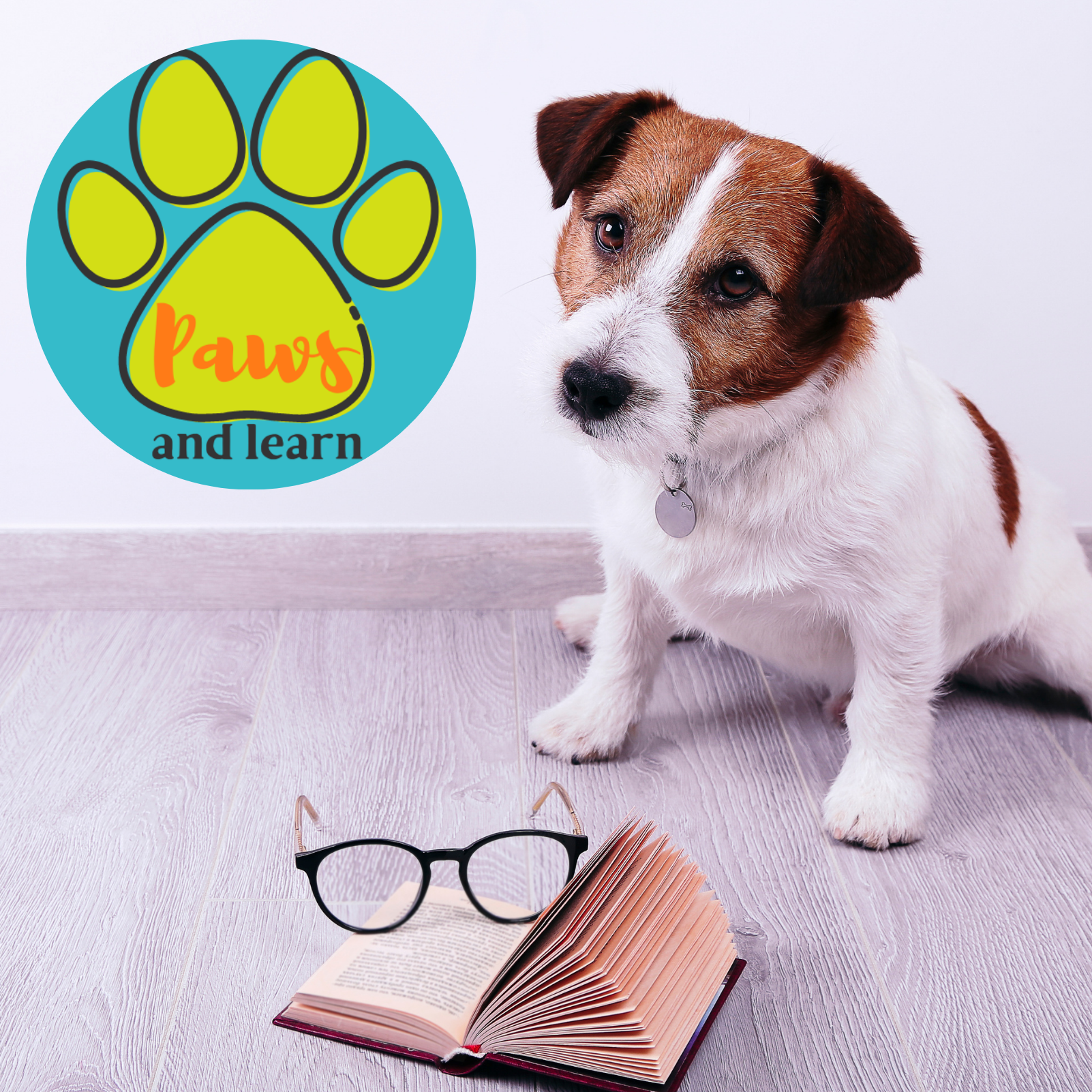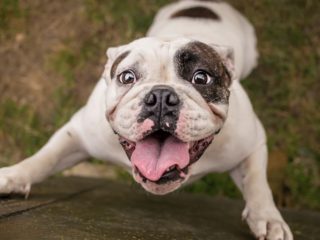Cocker spaniel puppies are often known for their long ears and thick, wavy fur, but most importantly their adorably big paws. Cocker spaniel owners often wonder why their puppies’ paws are so big. The fact is, looking at a puppy’s paws is a great way to indicate what your dog will look like as an adult!
A cocker spaniel puppy’s paws may look huge compared to their bodies; although, their bodies typically catch up to those big feet eventually. Puppies that have larger paws typically indicate that they will be taller and weigh more as an adult.
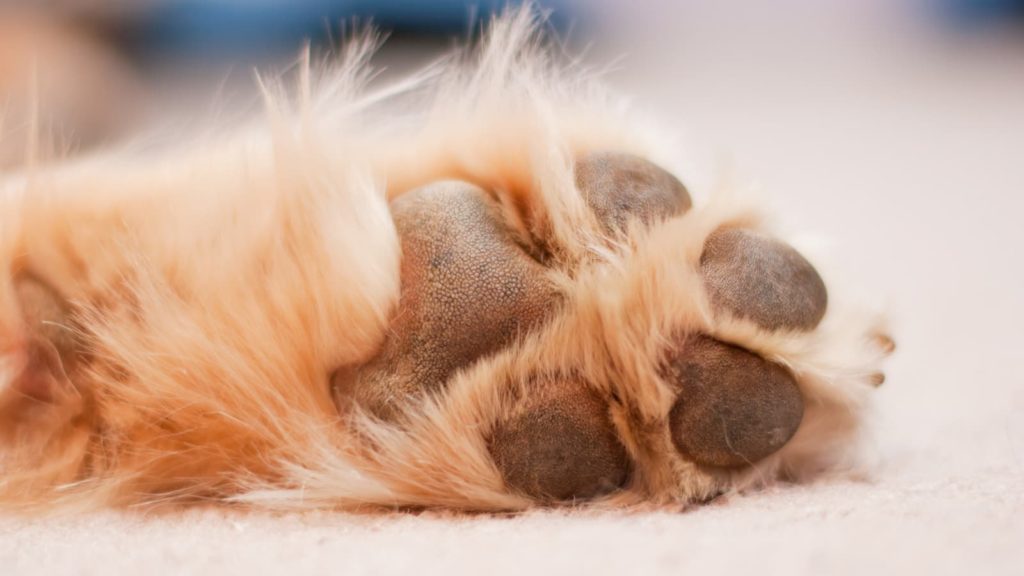
It is easier to determine how big your cocker spaniel will be a little farther into their growth, but don’t worry, puppies grow so fast you should be able to get a better idea of their adult size at around 16 weeks!
Why Are Cocker Spaniel Paws So Big?
A lot of cocker spaniel owners become concerned after realizing their puppies’ paws are so large; however, after seeing multiple other cocker spaniel owner comments, it is widely known that these pups having large paws is a very common occurrence!
Cocker spaniels often have front and back paws that are different in size. It is quite common for the front paws to be bigger than the back ones; although every dog is different, they might be perfectly even!
Even though it is common for cocker spaniel puppies to have large paws, if you notice a difference in your dog’s paw size that is abnormal, there could be a more serious issue. It is best to get your dog to the vet right away if you notice any of their paws looking larger than they normally are.
Disclaimer: This post may contain affiliate links. We only recommend high-quality products that are used and recommended by real owners. If you use these links to buy something we earn a small commission.
Do Cocker Spaniels Have Webbed Paws?
Cocker spaniels are water breed dogs, because of this they have fully webbed feet. If you separate your cocker spaniel’s toes you should be able to see the unique connected skin and tissue that causes the paws to be webbed. Not only is swimming easier for this breed, but having webbed feet helps their walking too!
Cocker spaniels were originally bred as hunting dogs for game birds. Having webbed paws is one of the main characteristics of hunting dogs that are so helpful to them; seeing as they are often working on harsher surfaces such as wet, muddy, or snowy terrain, these paws are also helpful for digging!
Because of their webbed paws, the cocker spaniel can grip onto harsher surfaces which makes it easier for them to move around. If your cocker spaniel is exposed to harsh surfaces against their paws, it is important to clean them immediately after. There could be debris stuck inside their paws that can cause extreme discomfort and pain for them.
Most cocker spaniels have webbed feet although, in rare cases they may not, mostly due to overbreeding. If your dog doesn’t have webbed feet it is nothing to worry about, as long as the dog is not being used as a hunting dog, being exposed to harsh terrain often, or exposed to other situations where webbed feet would be necessary.
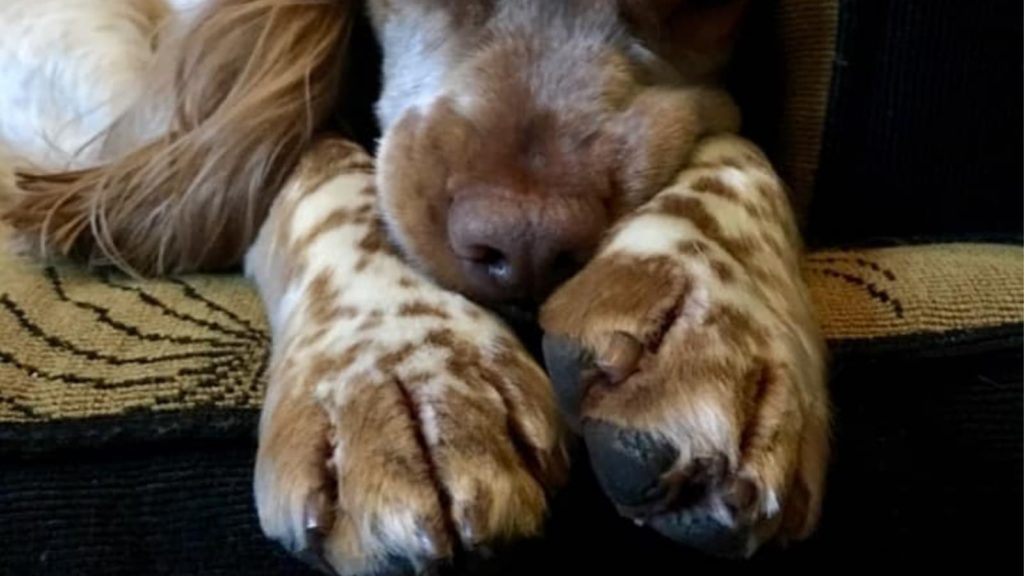
Cocker Spaniel Paw Problems
There are several reasons why your cocker spaniel may be having issues with its paw(s). Factors such as cuts, tears, dry or cracked paw pads and nails, bacterial and fungal infections, burns, allergies, bug bites, etc. It is normally pretty easy to tell if your dog is struggling with a paw issue, these are some behaviors and symptoms that indicate you may want to have your dog’s paw(s) looked at:
- Licking the paw
- Lesions
- Bleeding
- Limping
- Loss of appetite
- Red or inflamed
- Bad odor
- Ulcers
- Blisters
- Discharge
- Hair loss
- Pododermatitis (when the paw skin gets inflamed and affects the nails and between the toes/paw pads.)
Although these symptoms are normally easily treatable, it is important to get the dog help right away seeing as some of these symptoms could be painful to your dog.
If your Cocker Spaniel licks its paws a lot Check out this article that can help you know why and what to do.
Cocker Spaniel Paw Pad Burns
Although dog paws are very resilient, hot surfaces are one of the most dangerous encounters for the well-being of a dog’s paw pad. It is best to avoid hot pavement, gravel, dirt, blacktop, streets, parking lots, and any other surfaces that are hot, and take precautions such as:
- Walking your dog when it is cool outside or there is shade available
- Stay on grass
- Use paw moisturizer, wax, and balm
- Use dog shoes
There are several telling signs that your dog may have burnt paws, these include:
- Limping
- Avoiding walking
- Licking or chewing their feet
- Dark-colored paw pads
- Blisters or redness
If your dog’s paws have been subject to burn there are several immediate actions you should take:
- Bring them inside right away
- Use a cold compress or cold water
- Don’t let the dog lick the paw pad(s) (this could cause infection)
It is best to visit a vet right away if your dog’s paws have been burned. The vet can offer solutions that will prevent further damage, infection, or discomfort to the paw(s).
Thankfully if a paw burn is given time to heal there should not be any long-term damage to the paw pad. Depending on the severity of the burn, healing can take up to 21 days or even longer in some cases.
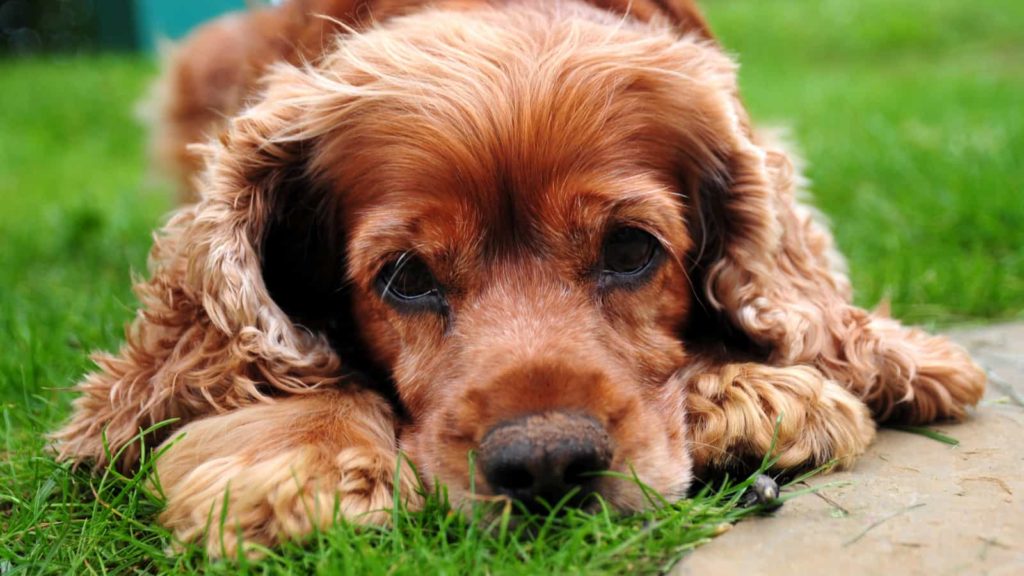
How To Heal A Cocker Spaniels Paw
A veterinarian can usually heal an irritated paw very fast. Oftentimes the use of antibiotics, creams, ointments, or sprays is given to help eliminate any discomfort your dog is feeling while also healing the paw and any infection that may be there.
The paws are also one of the best hiding places on a cocker spaniel for mites, ticks, and other parasites. Keeping check between your dog’s toes and all over their body, especially after being outside can help prevent this. Using anti-parasite methods such as tick collars, creams, and medicines can also help in avoiding these parasites.
If your cocker spaniel is licking their paws a lot, this could be due to any of the factors listed previously; although, it is normally itchiness caused by allergies. Cocker spaniels are prone to food and seasonal allergies. Certain medicines can normally be given to prevent bad allergies.
Tip: Keeping your cocker spaniels paws clean is key to preventing a lot of the issues above!
This portable paw washer can be useful to help your dog’s paws stay clean and healthy.
How To Groom My Cocker Spaniel’s Paws At Home
Our dogs are our family, we take care of them and give them as much love as possible. Although cocker spaniel owners are great at maintaining their dog’s fur, dental health, etc. the dogs’ paws are sometimes forgotten as a key part of grooming.
The truth is, keeping their paws clean, trimmed, and healthy is necessary for providing your cocker spaniel with the most comfort possible!
Grooming a cocker spaniel’s paws is quite easy! There are several tools you will need:
- Dog clippers/trimmers
- Haircutting scissors
- Nail clippers
- Brush/comb
The Andis Proclip Detachable Blade Clipper came highly recommended with reviewers stating that they are “perfect for cocker spaniel hair!”
Steps for grooming the paw:
- As you hold the paw, it is important to comb the paw hair in the direction of hair growth.
- Turn the paw so the pad is facing upward.
- You can use the clipper/trimmer to rid the hair between the toe pads — using the trimmer removes more hair between the toes so it is less likely for your cocker spaniel to get debris, mud, snow, etc. stuck in their paws.
- Using the scissors, gently clip the hair down to the top of the toenails — by using scissors during this step, you will get a nicer shape to the paw.
Grooming Tip: Start early! If you begin touching your cocker spaniels’ paws often when they are a puppy and introducing them to the grooming tools, they will be less anxious when the actual time to groom them arrives.
If you notice your cocker spaniel’s paw pads are suffering from dryness, it may be time to consider a paw balm, wax, or moisturizer which can help hydrate the paw pad and ease any discomfort your dog may be feeling!
Some cocker spaniel owners wonder why their dogs’ paws pads have a coarse hair-like covering. This can be due to a protein called keratin that produces what is named hyperkeratosis, or what people often call “hair feet.”
This condition occurs mostly in middle-aged or older cocker spaniels and is nothing to worry about!
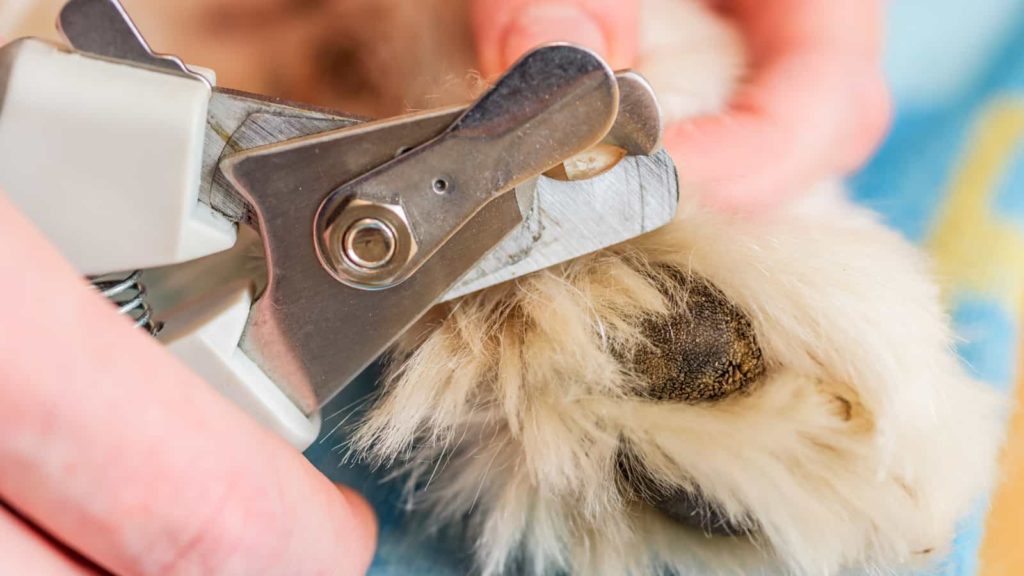
When you bathe your cocker spaniel or when their paws get wet be sure to make sure they get dried thoroughly.
Cocker Spaniel paws can hold a lot of water and drying them thoroughly can help keep bacteria from growing.
Cocker Spaniel Nail Care
Keeping your cocker spaniel’s nails trimmed is essential in maintaining their health. Seeing as this is one of the most sensitive parts of the paw other than the pads, it is important to keep their nails nice and healthy to avoid tears or fractures that could cause more complicated issues like ingrown toenails.
Ways to keep your cocker spaniels nails healthy and strong:
- Maintenance of nail
- Balanced diet
- Zinc
- Omega-3 fatty acids
- Fish oils
- Biotin
Always visit your vet to see what diet and other methods are best for your dog in particular!
How To Clip My Cocker Spaniels Nails At Home
Cutting a dog’s nails is a necessary task to avoid ingrown toenails, posture issues, skeletal damage, etc.; however, some owners want to avoid the price of taking their dog to the vet or groomers every 1–2 months or so to have their dog’s nails trimmed; which can cost between $10–$40 for nails and $40–$100 for full grooming depending on the groomer. Some owners wonder, why take them to the groomer when they could clip their nails and groom their paws at home?
Cocker spaniel owners that choose to clip their dog’s nails at home often worry about accidentally hurting them. There are several things to watch out for so you don’t injure your pup:
- Don’t clip the nail too short (Exposing the nail quick can be dangerous seeing as it is filled with blood vessels and nerves.)
- Don’t force your dog to cooperate (Providing a stress-free environment for the dog while clipping its nails will allow for it to trust you and result in an easy and quick nail trimming session. Distracting your dog with treat of a lick mat with peanut butter on it can be useful.)
- Go slow while clipping the nail! There is no reason to rush, rushing may cause an accidental slip with the nail clippers resulting in unwanted injury.
- Like grooming the hair of the paw, it is important to introduce the dog to the nail tools early on to ease their stress.
Your dog’s nail type and length will determine which nail tools are best to use:
- Scissor clippers
- Guillotine Clippers
- Grinder
- Dog nail file
- Dog nail buffer
Steps to cutting your dog’s nails:
- Identify where the quick of the nail ends. On white & light colored nails you can see where the nail turns from pink to white. This is where the quick ends. On black or brown nails it’s harder to see. With dark colored nails only cut a small bit at a time.
- Cut at least 2 millimeters away from the end of the quick.
- Grip the paw and steady the nail trimming tool in place, cut firmly and smoothly.
- As you trim, the dead nail will appear dry and powdery, keep cutting until you begin to see a darker circle in the center of the nail which indicates you are approaching the quick and should stop trimming.
- You can file your dog’s nails after trimming to ensure there are no sharp edges. I use this nail grinder for my dog and find it has done a really great job for smoothing my dogs nails out.
Nail Trimming Tip: cutting slowly and taking a small snip at a time is recommended if you are not too confident about where to cut the nail!
You can check out our other Cocker spaniel grooming tips in these articles!
Cocker Spaniel Shedding Guide (Tips and Tricks From Owners)
Shaving Your Cocker Spaniel (Is it Ever Ok?)
You can check out our other Cocker spaniel grooming tips in these articles!
Cocker Spaniel Shedding Guide (Tips and Tricks From Owners)
Shaving Your Cocker Spaniel (Is it Ever Ok?)
All About Cocker Spaniel Paws (Size, Grooming, Problems)
Cocker Spaniel Teething and Teeth Care Guide
Bathing Your Cocker Spaniel (Frequency, & Puppy Tips)
Cocker Spaniel Tail Complete Guide (Docking, Grooming, Communication)
While we strive to give the most accurate and helpful information about your pet’s health that we can, this article is meant to be informational only and not medical advice. Never disregard, avoid or delay in obtaining medical advice from your veterinarian or other qualified veterinary health care provider regardless of what you have read on this site or elsewhere.
